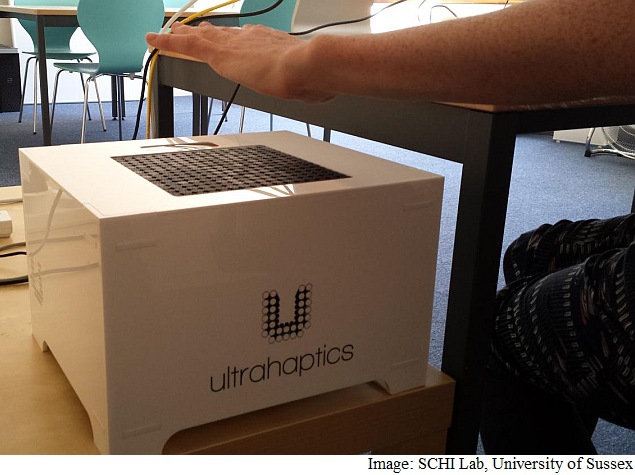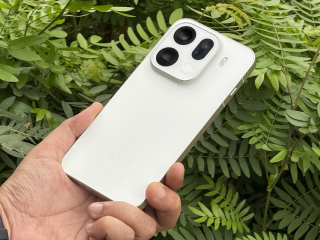- Home
- Science
- Science News
- New Tech Transmits Emotions Through Your Palm
New Tech Transmits Emotions Through Your Palm

According to Marianna Obrist from University of Sussex's department of informatics, short, sharp bursts of air to the area around the thumb, index finger and middle part of the palm generate excitement whereas sad feelings are created by slow and moderate stimulation of the outer palm and the area around the "pinky" finger.
Imagine a couple that has just had a fight before going to work.
"While she is in a meeting, she receives a gentle sensation transmitted through her bracelet on the right part of her hand moving into the middle of the palm. That sensation comforts her and indicates that her partner is not angry anymore," Obrist explained.
These sensations were generated in the experiment using the Ultrahaptics system.
The system enables creating sensations of touch through air to stimulate different parts of the hand.
During the study, one group of participants was asked to create patterns to describe the emotions evoked by five separate images: calm scenery with trees, white-water rafting, a graveyard, a car on fire and a wall clock.
The participants were able to manipulate the position, direction, frequency, intensity and duration of the stimulations.
A second group then selected the stimulations created by the first group that they felt best described the emotions evoked by the images.
They chose the best two for each image, making a total of 10.
Finally, a third group experienced all 10 selected stimulations while viewing each image in turn and rated how well each stimulation described the emotion evoked by each image.
The third group gave significantly higher ratings to stimulations, when they were presented together with the image they were intended for, proving that the emotional meaning had been successfully communicated between the first and third groups.
"A similar technology could be used between parent and baby, or to enrich audio-visual communication in a long-distance relationships," the authors noted.
It also has huge potential for "one-to-many" communication -- for example, dancers at a club could raise their hands to receive haptic stimulation that enhances feelings of excitement and stability.
"Relatively soon, we may be able to realise truly compelling and multi-faceted media experiences, such as nine-dimensional TV or computer games that evoke emotions through taste," Obrist concluded.
The findings were presented at the "CHI 2015" conference in South Korea on April 21.Catch the latest from the Consumer Electronics Show on Gadgets 360, at our CES 2026 hub.
- Samsung Galaxy Unpacked 2025
- ChatGPT
- Redmi Note 14 Pro+
- iPhone 16
- Apple Vision Pro
- Oneplus 12
- OnePlus Nord CE 3 Lite 5G
- iPhone 13
- Xiaomi 14 Pro
- Oppo Find N3
- Tecno Spark Go (2023)
- Realme V30
- Best Phones Under 25000
- Samsung Galaxy S24 Series
- Cryptocurrency
- iQoo 12
- Samsung Galaxy S24 Ultra
- Giottus
- Samsung Galaxy Z Flip 5
- Apple 'Scary Fast'
- Housefull 5
- GoPro Hero 12 Black Review
- Invincible Season 2
- JioGlass
- HD Ready TV
- Laptop Under 50000
- Smartwatch Under 10000
- Latest Mobile Phones
- Compare Phones
- OPPO Reno 15 Pro Max
- Honor Win RT
- Honor Win
- Xiaomi 17 Ultra Leica Edition
- Xiaomi 17 Ultra
- Huawei Nova 15
- Huawei Nova 15 Pro
- Huawei Nova 15 Ultra
- Asus ProArt P16
- MacBook Pro 14-inch (M5, 2025)
- OPPO Pad Air 5
- Huawei MatePad 11.5 (2026)
- Xiaomi Watch 5
- Huawei Watch 10th Anniversary Edition
- Acerpure Nitro Z Series 100-inch QLED TV
- Samsung 43 Inch LED Ultra HD (4K) Smart TV (UA43UE81AFULXL)
- Asus ROG Ally
- Nintendo Switch Lite
- Haier 1.6 Ton 5 Star Inverter Split AC (HSU19G-MZAID5BN-INV)
- Haier 1.6 Ton 5 Star Inverter Split AC (HSU19G-MZAIM5BN-INV)












